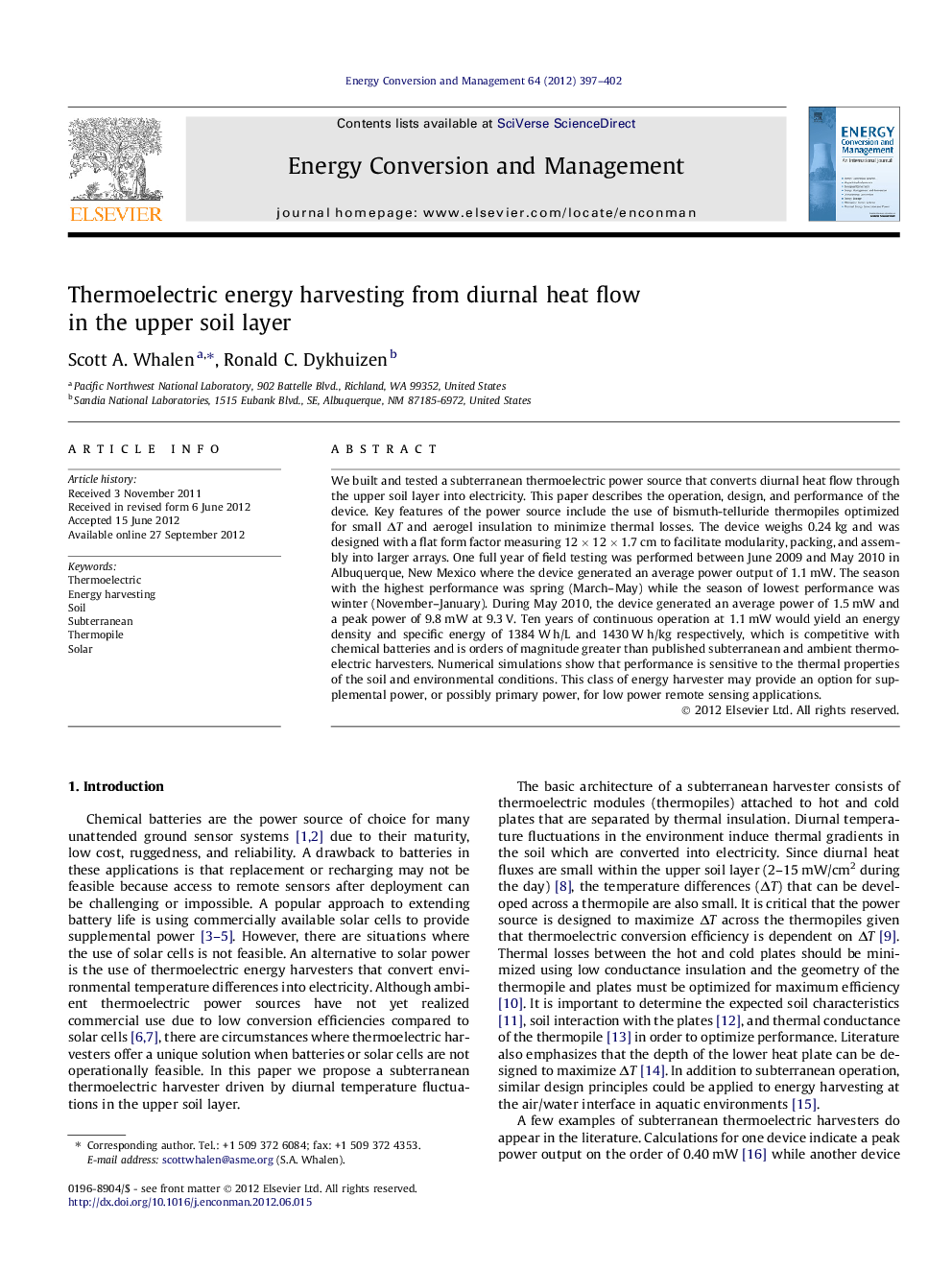| Article ID | Journal | Published Year | Pages | File Type |
|---|---|---|---|---|
| 761143 | Energy Conversion and Management | 2012 | 6 Pages |
We built and tested a subterranean thermoelectric power source that converts diurnal heat flow through the upper soil layer into electricity. This paper describes the operation, design, and performance of the device. Key features of the power source include the use of bismuth-telluride thermopiles optimized for small ΔT and aerogel insulation to minimize thermal losses. The device weighs 0.24 kg and was designed with a flat form factor measuring 12 × 12 × 1.7 cm to facilitate modularity, packing, and assembly into larger arrays. One full year of field testing was performed between June 2009 and May 2010 in Albuquerque, New Mexico where the device generated an average power output of 1.1 mW. The season with the highest performance was spring (March–May) while the season of lowest performance was winter (November–January). During May 2010, the device generated an average power of 1.5 mW and a peak power of 9.8 mW at 9.3 V. Ten years of continuous operation at 1.1 mW would yield an energy density and specific energy of 1384 W h/L and 1430 W h/kg respectively, which is competitive with chemical batteries and is orders of magnitude greater than published subterranean and ambient thermoelectric harvesters. Numerical simulations show that performance is sensitive to the thermal properties of the soil and environmental conditions. This class of energy harvester may provide an option for supplemental power, or possibly primary power, for low power remote sensing applications.
► We built and tested a subterranean thermoelectric power source. ► Our device incorporates novel thermoelectric power modules. ► Modeling with actual weather conditions agreed with experimental data. ► Mass and volume are significantly reduced compared to existing literature.
